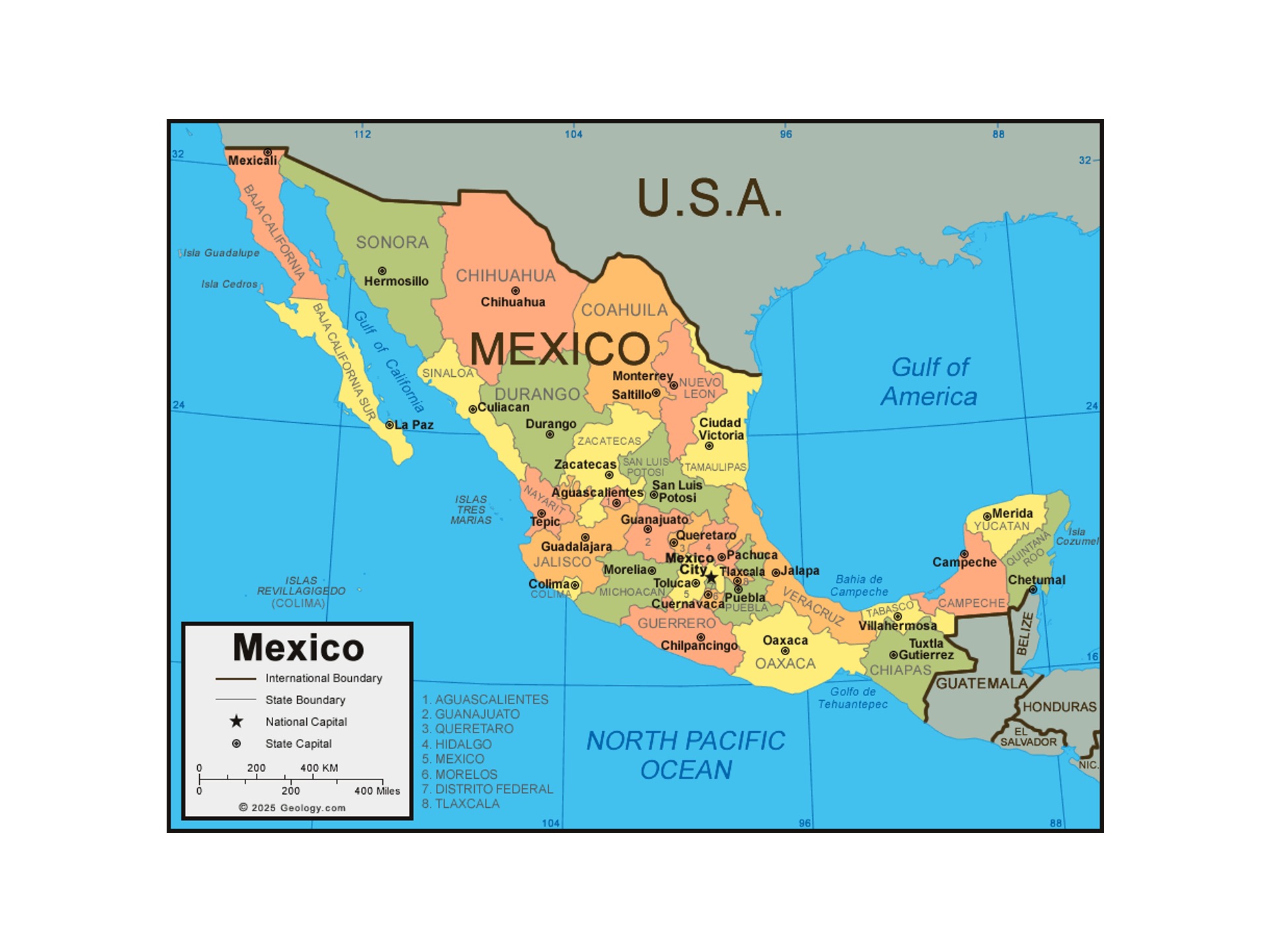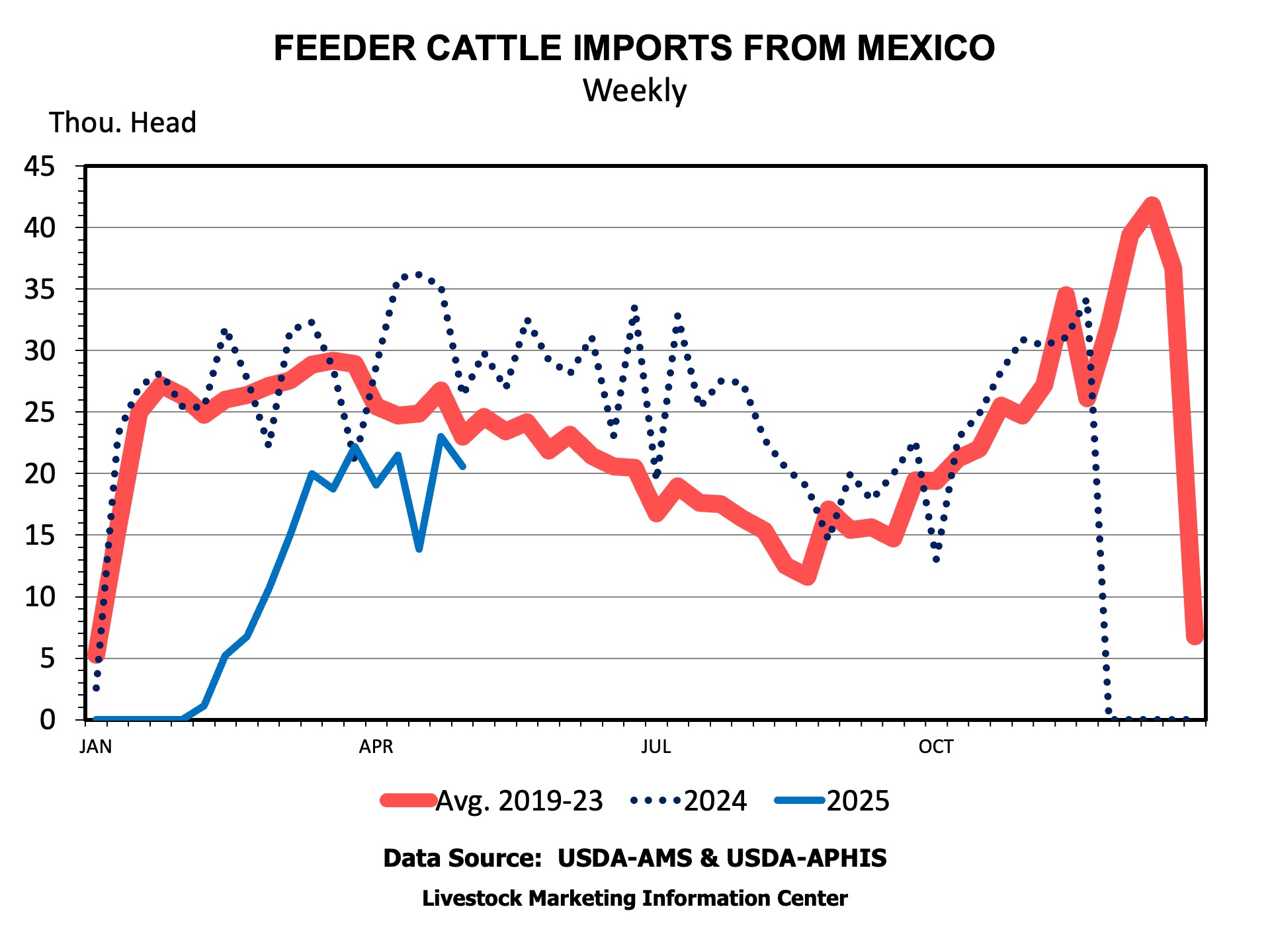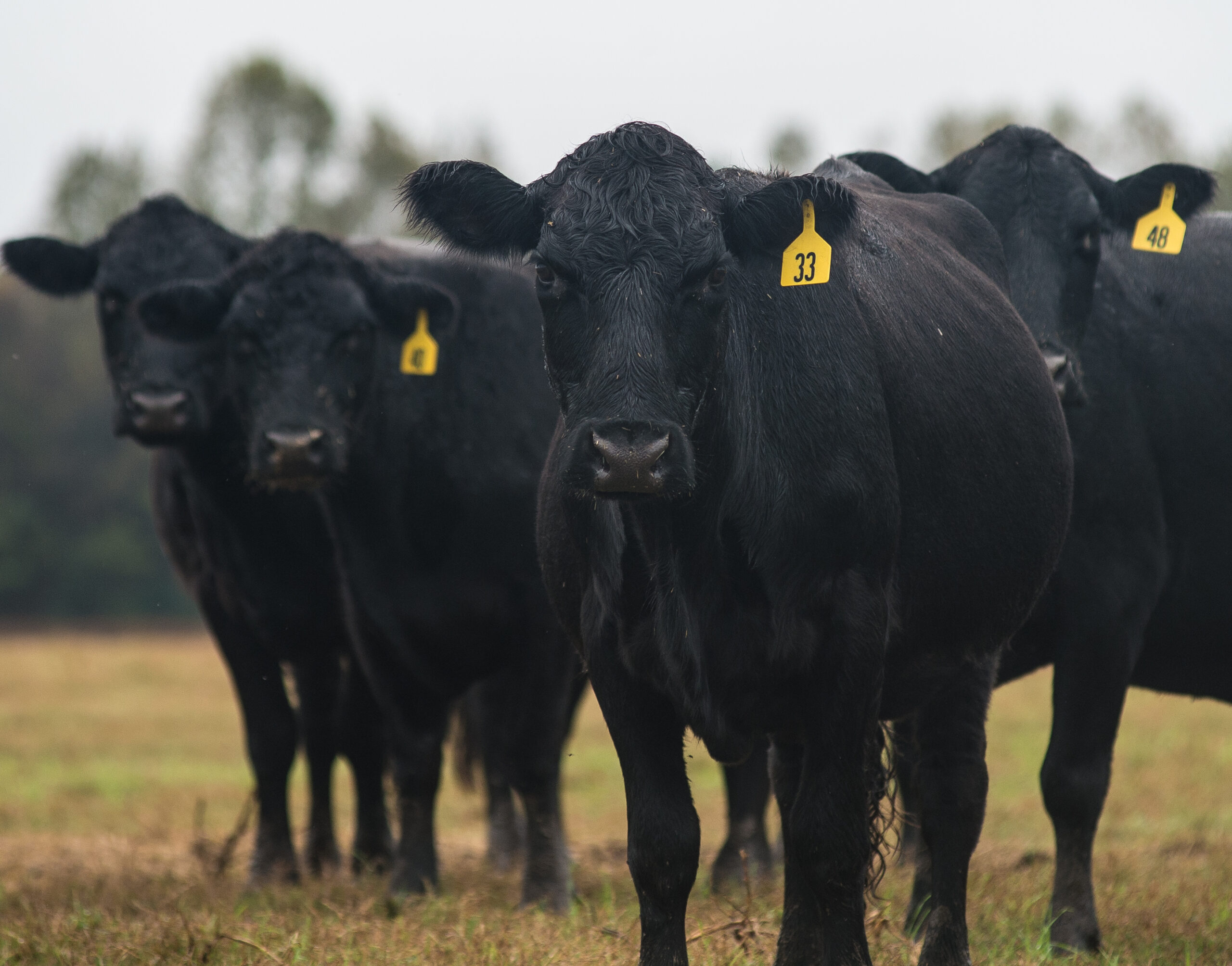The U.S. closed the border to Mexican cattle again on May 11, 2025. This closure is the next round following the closure in late November 2024 and reopening in February 2025. The closure was prompted by continued expansion in screwworm cases in Southern Mexico. Additionally, new cases were reported as far North (or West as you read the map) as the states of Veracruz, Oaxaca, and Tabasco. The narrowest part of Mexico, geographically the Isthmus of Tehuantepec, has been considered an important line of defense because this is where the country begins to widen. The widening area leads to more land area to treat, making effective control that much more difficult.
Since the border was reopened to cattle in February, feeder cattle imports rebounded to about 20,000 head per week. Imports have remained below 2024 and the previous five-year average. Additional inspection and quarantine regulations likely slowed the pace of imports, as well as not all ports of entry operating for cattle. Only 4 of the 11 ports of entry for cattle have been operating. For example, of the six Texas ports of entry, only Presidio had cattle crossing since the border was reopened. Santa Teresa, New Mexico is the largest cattle port of entry, and it had been operating since the week of February 8, 2025.
Feeder cattle imports from Mexico peak seasonally in the Spring and Fall. Over the 10 years from 2015-2024, feeder cattle imports from Mexico averaged 5.2 percent of feedlot placements into feedlots with over 1,000 head capacity. Presumably, most of those cattle are placed into feedlots in Texas and the Southwest. Annual feeder cattle from Mexico was the equivalent of 18.0 percent of annual feedlot placements in Texas, Oklahoma, Arizona, and California over the 2015-2024 period.
The loss of feeder cattle imports will further tighten feeder cattle supplies. Already record high calf prices will likely see some more upward pressure. The loss of these cattle will further pressure feedlots in the Southwest as well.



Anderson, David. “Screwworms, Part II.” Southern Ag Today 5(20.2). May 13, 2025. Permalink

Leave a Reply